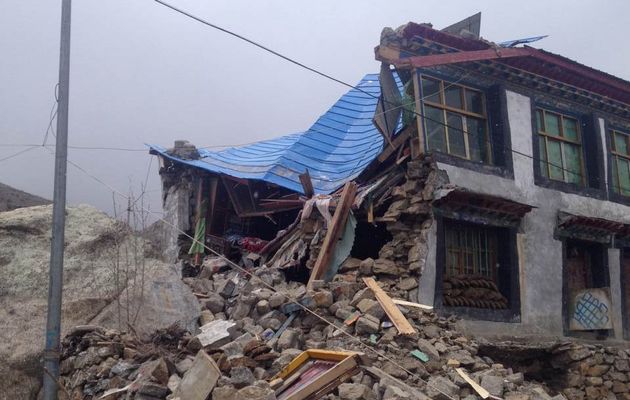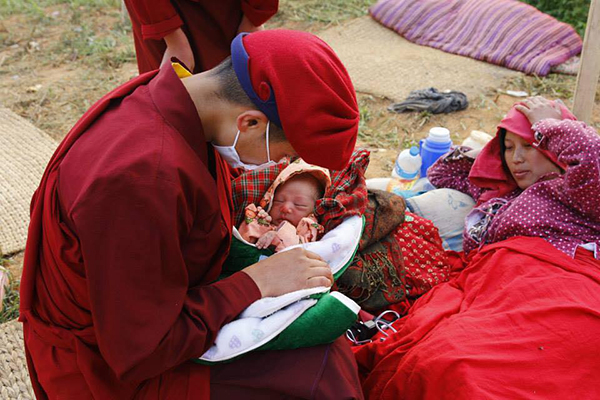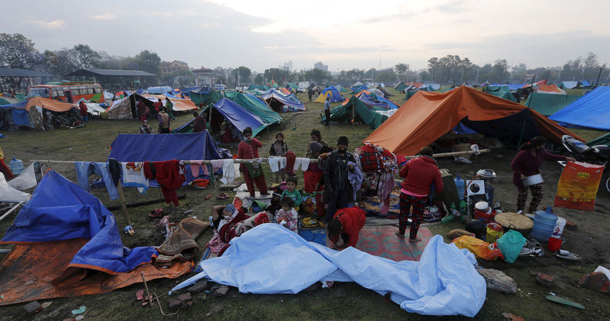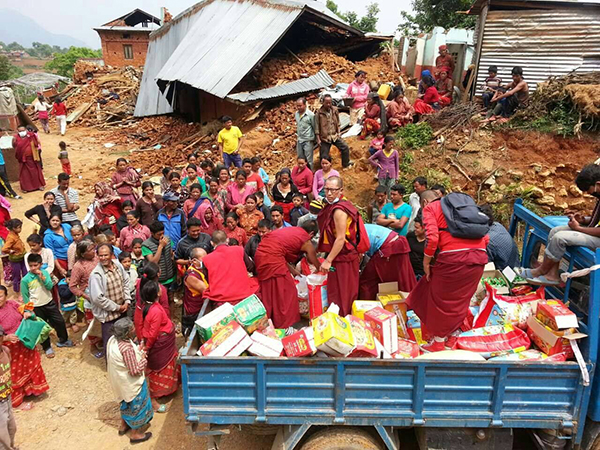People in Nepal and neighbouring regions continue to be affected after the devastating 7.9 magnitude earthquake last month on April 25. Not only did the country experience another major earthquake on May 12 which registered at 7.3 on the Richter scale, but it has also felt hundreds of aftershocks, as well as some landslides and avalanches, since the initial tectonic rupture. Additionally, with the monsoon season rapidly approaching, many worry about the potential impact of exposure, continuing natural disasters, disease and dwindling resources.

80% of houses in Kyidrong, Dingri and Nyalam in Tibet were destructed by the earthquake on April 25, 2015.
The current death toll in Nepal stands at 8,413, including approximately 100 people killed within Tibet and India, and 6 US Marines who died in a helicopter crash while delivering aid within Nepal. 366 people are still missing. However, the biggest challenge now facing Nepal is the number of people made homeless by the tragedy. 299,588 homes were entirely destroyed and 269,107 were significantly damaged as entire villages were flattened. Additionally, on the Tibetan side of the mountainous border with Nepal, nearly 80 percent of houses in the counties of Kyidrong (Kyirong), Nyalam and Dingri (Tingri) are said to have been destroyed. Of particular concern to the Tibetan community is the large number of Tibetan refugees living in exile in Nepal, often in remote areas, who have been affected.
In response to the problem of homelessness, many relief organisations are trying to focus on the task of providing basic shelter, but in both Nepal and Tibet, this task has been complicated by the fact that many places have remained inaccessible for great lengths of time. With the monsoon season expected to bring additional landslides and flooding, this problem will only be exacerbated. Additionally, the aid provided so far has not been enough. In fact, only a very small fraction of Nepal’s need for aid has been met, according to The Nepal Earthquake Flash Appeal launched by the United Nations Office for the Co-ordination of Humanitarian Affairs.
Many areas of Nepal do not have access to clean water, and others have lost all of their water and sanitation facilities. This has created an increased risk of communicable disease. To try to combat this growing problem, many countries including China, India,Israel,and the United States, and a large number of others,have contributed medical aid in the form of mobile field hospitals, skilled specialists and physicians, medical supplies and pharmaceuticals, packaged drinking water, and aircraft for the use of emergency medical evacuations.

A Tibetan nun nursing a new-born baby while the mother rests at a temporary shelter in northern Nepal.
Photo: Tibet.net
In addition to international medical relief, a team of Tibetan monks arranged free western medical and Tibetan traditional medical check-ups for survivors within Nepal. Meanwhile, Tibetan nuns with basic medical training gave tetanus shots and medical treatment to the injured. However, the problem is far from resolved and there is still a need for more help.
With a catastrophic situation looming, the United Nations has been urging a quick and efficient relief effort, and has reminded the international community that there is only a “small window of opportunity” to assist affected communities as the monsoon season approaches and threatens to hamper efforts.
Despite limited funds, many people within Nepal are doing what they can to provide immediate relief within their own localities. Almost everybody who survived unscathed pulled together, and often it is the Tibetan refugees in Nepal who are said to be at the forefront of local efforts. Tibetan monasteries in Kathmandu have organised relief work and have already dispatched teams to distribute food to the affected local areas, and Tibetan refugee organisations have been working to provide assistance to others in desperate need of help.
Despite the generally positive and constructive outlook of those within Nepal, there is a growing sense of anxiety as the list of potential risks facing the country continues to compound. Farmers displaced from rural villages need to be able to return to their homes before the start of planting season to obviate the potential severe impact on the country’s food security. There are also fears for Nepal’s most vulnerable, as cases of human trafficking and child exploitation continue to emerge. Additionally, the threat of an increased number of landslides during the monsoon season could cause run-off and interfere with the ability of hydroelectric facilities to produce enough energy. In turn, this could result in there being increased periods of the day without access to power, causing further constraints upon relief efforts.






 Print
Print Email
Email